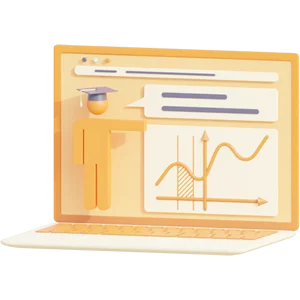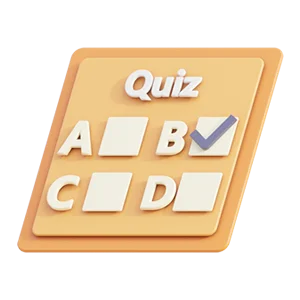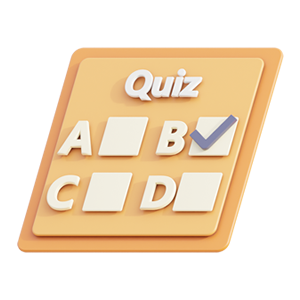2022- 2023 NCLEX-RN EXAM PRACTICE Q AND ANS GRADED A+
2022- 2023
NCLEX-RN EXAM
PRACTICE Q AND
ANS GRADED A+
You have delegated care of a patient in restraints to a nursing
assistant. How often should the nursing assistant inspect skin
integrity for this patient?
a. Every 30 minutes
b. Every 2 hours
c. Every 3 hours
d. Every 4 hours - ANSWER-a. Every 30 minutes
You are working in the emergency department and find out that
a tornado has hit the local area. Numerous casualties are being
sent to the emergency department. What action should you take
at this time?
a. Prepare the triage room.
b. Obtain additional supplies.
c. Activate the agency disaster plan.
d. Call in additional staff. - ANSWER-c. Activate the agency
disaster plan.
What signs and symptoms would a patient with stage I Lyme
disease have?
a. Signs of neurological disorders
b. Enlarged and inflamed joints
c. Arthralgias
d. Flu-like symptoms - ANSWER-d. Flu-like symptoms
When developing a plan of care for a patient with stage I Lyme
disease, which of the following would you want to include?
a. No treatment without symptoms
b. Three-week course of oral antibiotics
c. Hospitalization for intravenous antibiotics
d. None of the above - ANSWER-b. Three-week course of oral
antibiotics
You receive an order for 1000 mL of normal saline over 12
hours. The drop factor is 15 drops per 1 mL. You prepare to set
the flow rate at how many drops per minute?
a. 15 drops a minute
b. 17 drops a minute
c. 21 drops a minute
d. 23 drops a minute - ANSWER-c. 21 drops a minute
You are preparing to administer an intravenous dose of 400,000
units of penicillin G benzathine (Bicillin). The 10 mL ampule
label reads penicillin G benzathine 300,000 units per mL. You
prepare to administer how much of the medication?
a. 1.3 ml
b. 1.5 ml
c. 10 ml
d. 13 ml - ANSWER-a. 1.3 ml
You are preparing to give potassium chloride 30 mEq in 1000 ml
of normal saline over 10 hours. The medication label reads 40
mEq per 20 mL. How many milliliters of potassium chloride do
you need to administer the correct dose?
a. 10 ml
b. 15 ml
c. 20 ml
d. 50 ml - ANSWER-b. 15 ml
You enter a patients room and find the patient not breathing, no
pulse, and unresponsive. You have called for help. What is the
next step?
a. Bag mask ventilations
b. Chest compressions
c. Oxygen
d. Open airway - ANSWER-b. Chest compressions
The correct hand placement for chest compressions is the:
a. Lower third of sternum
b. Upper half of the sternum
c. Upper third of the sternum
d. Lower half of the sternum - ANSWER-d. Lower half of the
sternum
What is the proper technique for opening the airway on a trauma
patient?
a. Head tilt-chin lift
b. Flexed position
c. Modified head tilt-chin lift
d. Jaw thrust maneuver - ANSWER-d. Jaw thrust maneuver
The most appropriate place to check the pulse on a 1-month-old
infant is:
a. Brachial
b. Carotid
c. Popliteal
d. Radial - ANSWER-a. Brachial
You are encouraging your postoperative patient to cough and
take deep breaths. The patient questions why it is so important
to do this. Your response would include the understanding that
retaining pulmonary secretions can lead to:
a. Fluid imbalance
b. Carbon dioxide retention
c. Pulmonary edema
d.Pneumonia - ANSWER-d.Pneumonia
Which of the following would you want to include in an education
session to the staff on HIV and AIDS?
a. Newborn infants of HIV positive mothers usually test positive
b. The hematological system is usually attacked by HIV.
c. With AIDS, T4 cells cannot form protective antibodies due to
depleted B cells.
d. T lymphocytes are destroyed because the virus attacks the
immune system. - ANSWER-d. T lymphocytes are destroyed
because the virus attacks the immune system.
You are conducting a teaching session for mothers at a local
school on rubeola (measles). Which of the following would you
not want to include in this education?
a. Profuse runny nose, coughing and fever occur before the
rash develops.
b. The child may develop small, blue-white spots with a red
base in the mouth
c. Ears usually develop a rash first, which then spreads toward
the feet.
d. The communicable period usually ranges from 10 to 15 days
after the rash appears. - ANSWER-d. The communicable period
usually ranges from 10 to 15 days after the rash appears.
Preview document (3 of 102 pages)
Knoowy benefits
$ 31.46
 Money back guarantee
Money back guarantee
 Documents can be downloaded immediately
Documents can be downloaded immediately
 $0.50 discount when paying with balance
$0.50 discount when paying with balance
-
 Receive free quiz questions with document
Receive free quiz questions with document

Specifications
- School: Chamberlain College Of Nursing
- Course: NURSING
- Subject: 2022- 2023 NCLEX-RN EXAM PRACTICE Q AND ANS GRADED A+
- All documents for this course ›
- Subject code: 2022- 2023 NCLEX-RN EXAM PRACTICE Q AND ANS GRADED A+
- All documents for this course ›
- Year of study: 2024
Document
- Section: Examinations
- Made on: 04-28-2024
- Type: .pdf
- Pages: 102
- Language: English
Tags
Seller
I am passionate and reliable in my work as a tutor, for all your assignments and questions on Various subjects, please don't hesitate to reach out to me. this page contains updated exam solution .EXCELLENT HOMEWORK HELP AND TUTORING ,ALL KIND OF QUIZ AND EXAMS WITH GUARANTEE OF A.I offer high quality documents ( Testbanks ,assignments, exams and case studies.)In various fields of study that are up to date and highly rated.
I am ambitious and driven, my documents are 100% guaranteed to help you excel in your studies with NO plagarism
Do Not Hesitate To Hit My Inbox For Further Assistance/Inquiries, I Will Be More Than Glad To Help.
Earn from your summaries?
Subjects of NURSING - Chamberlain College Of Nursing
More NURSING ›ati ati comprehensive predictor ati fundamentals proctored ati mental health ati nutrition ati pharmacology community health comprehensive health care health care / nursing health care/ nursing healthcare hesi hesi rn exit maternal newborn med surg medical surgical mental health nurs nursing nursing & health pediatrics pharmacology test bank tncc
 Deal: get 10% off when you purchase 3 or more items!
Deal: get 10% off when you purchase 3 or more items!
Deal: get 10% off when you purchase 3 or more items!








